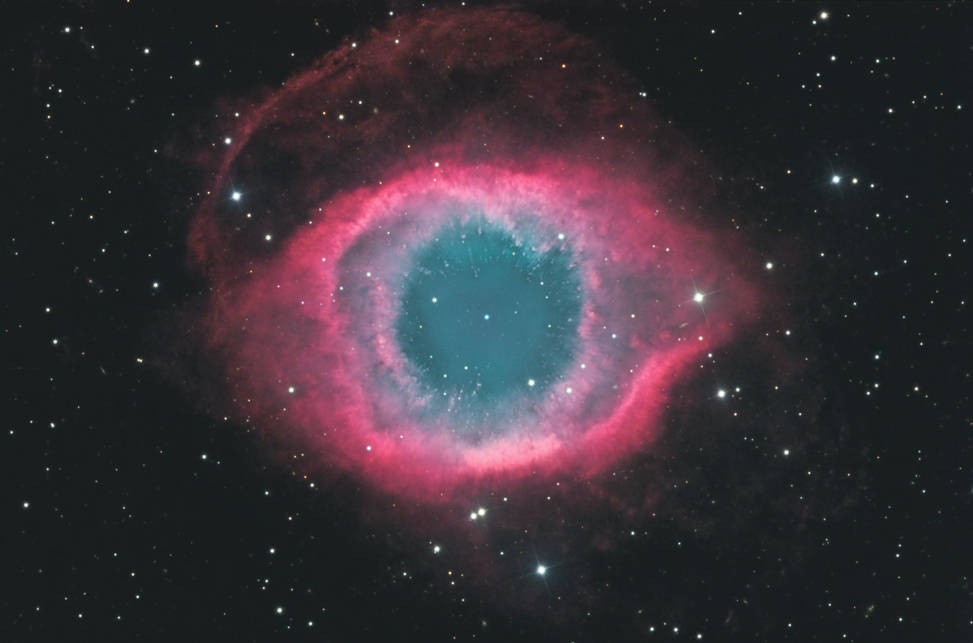Helix Nebula: This nebula is a large, bright planetary nebula, the type of nebula which it is generally thought our Sun will produce as nuclear fusion slows and then dies in its core,
and it expels its outer layers of gas. For obvious reasons, it has been called "The Eye of God" and "The Eye of Sauron." Estimates of its distance from Earth vary, but tend to be around 650 light years,
making it the closest planetary nebula to Earth; it is about six light years across (including the fainter nebulosity).
The little blue star at the center of the nebula (in the middle of the blue/green disc) is the star that started this nebula when it shucked off its outer layers; that event is thought to have
happened about 11,000 years ago. That "blue" star actually is a white dwarf, about the size of Earth, but has a mass very close to that of the original star; it's so dense that a teaspoon
of a white dwarf would weigh as much as a few elephants! It's a very hot star, emitting most of its visible light in the blue spectrum (no, I don't know why they call a blue star a "white" dwarf!).
Technical Information:
(HaL)RGB: 810:225:170:200:180 Luminance layer consists of a blending of twenty-seven 30-minute images through an Astrodon Ha filter and fifteen 15-minute images taken through an
Astrodon luminance filter; red, green and blue channels are integrations of ten-minute images. All images unbinned.
Equipment: RCOS 14.5" carbon-truss RC, SBIG STL11000M with internal color filter wheel (Astrodon Type 2 filter set), on a Bisque Paramount ME German Equatorial Mount.
Image Acquisition/Camera Control: Maxim DL, controlled with ACP, working in concert with TheSky v6.
Processing: All images calibrated (darks and dawn flats), aligned and combined in Pixinsight. Color combine in Pixinsight. First part of finish work (curves and levels,
adjustment of contrast; noise reduction and sharpening) was done in Pixinsight; rest of finish work (blur background; tweak color balance and saturation) in Photoshop CS5.
Location: Data acquired remotely from Fair Dinkum Skies, Moorook, South Australia.
Date: Images taken on many nights from August through October of 2014. Image posted April 9, 2015.
CCD Chip temperature: -5C, -10C and -15C
Copyright 2014, 2015 Mark de Regt

